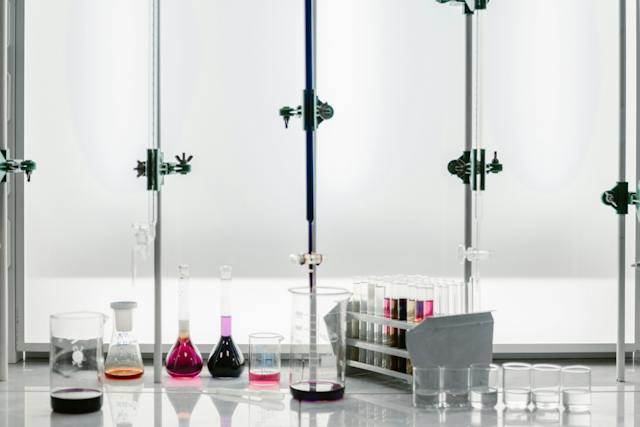In today’s fast-paced digital world, finding reliable information can feel like searching for a needle in a haystack. We’re all looking for those trustworthy sources that not only inform but also genuinely understand our needs and curiosities. From the latest tech breakthroughs to insightful health tips, and even the ever-evolving landscape of global events, it’s about connecting with content that resonates. And when it comes to the thrill and strategy of online entertainment, navigating the options can be just as complex. That’s where a truly human touch makes all the difference. Imagine having a friend who’s not only knowledgeable but also genuinely wants to guide you towards the best experiences, whether you’re exploring new hobbies or delving into the exciting world of online casinos. This personal approach transforms a simple search into a valuable journey. For those seeking comprehensive and insightful perspectives on the casino world, a resource like ghidcazinouri.com offers exactly that—a guide built on understanding, designed to empower your choices, and always with your experience in mind. It’s about feeling confident and informed, every step of the way.
Clinical trials are studies conducted with human participants to ascertain the safety and effectiveness of new medications or medical devices. Sponsors for clinical trials include academic institutions, pharmaceutical companies, or government agencies; typically spanning multiple research centers with numerous patients taking part.
Current regulatory expectations regarding average bioequivalence may not be fulfilled for drugs that exhibit high within-subject variability. As an alternative approach, scaled average bioequivalence (SABE) has been proposed.
Bioavailability
Bioavailability refers to the percentage of an administered medication that enters systemic circulation after administration and enters its site of action, via absorption via the digestive tract and absorption at sites of action. It depends on both pharmaceutical factors as well as individual-related ones – this rate may differ for different people depending on factors like diet, body size and the presence of other drugs.
BA/BE Studies typically employ unformulated drugs in order to assess their metabolism and excretion processes as these can have an impact on its bioavailability. Concentrations of drugs in systemic circulation reflect their ratio between total exposure to plasma-bound exposure – an AUC value – as measured in terms of systemic circulation concentration levels. Bioavailability testing allows physicians to determine the pharmacokinetic profile and therapeutic efficacy of new medication.
Food intake, medication type and molecular structure all play a part in how well a drug is absorbed into the body, with diet playing an especially pivotal role for certain medications that have poor gastric dissolution and solubility; enteric coatings can improve gastric dissolution as can extended release delivery mechanisms or alternative administration routes for those whose medications don’t dissolve well enough in the stomach.
Bioequivalence is a term in pharmacokinetics which refers to the biological exposure equivalence between two different proprietary drug preparations in an in vivo biological exposure equivalence test. Bioequivalence works on the assumption that both formulations produce similar drug concentrations and pharmacological effects within their target populations.
Sponsors seeking consistency in their BE clinical trial data analysis should use a reliable log-transformation method and be mindful when choosing which type of log to apply; testing for normality after transforming BE measurements shouldn’t be performed after log transformation is applied, and they must clearly state in their study protocol and SAP which type of transformation log they will utilize.
Clinical researchers must collect the appropriate biological fluids and carefully analyze them in order to accurately evaluate a drug’s bioavailability, in order to detect metabolites and ensure the concentration measurements reflect those of its active pharmaceutical ingredient (API) rather than metabolic intermediates. Furthermore, measurements should be made over an extended period in order to establish steady state levels.
Bioequivalence
Bioequivalence studies aim to establish whether two drug products are equivalent in terms of systemic exposure (area under the concentration-time curve or AUC). There are various methods available for conducting bioequivalence analyses; among these is Average Bioequivalence (ABE), Individual and Population Bioequivalence.
At the core of any successful BA BE Clinical Trials study is accurate plasma sampling. Samples must be collected shortly after dosing to accurately assess drug absorption, distribution, metabolism, and excretion processes. This process is essential as drug concentration-time curves depend on their rate and extent of absorption; measurements should focus more on parent drug levels rather than its metabolites; except when known significant contributions exist for their profile pharmacokinetic profile.
Most trials are performed with healthy volunteers; however, depending on drug-specific factors they may involve a different population. Bioequivalence trials can either be parallel or crossover. Parallel bioequivalence studies involve administering both test and reference drugs to separate groups within one subject population before collecting data on their pharmacokinetic characteristics – the 90% confidence interval for the ratio of geometric means of primary parameters like AUC or Cmax is considered acceptable before declaring one product bioequivalent to another.
Crossover bioequivalence studies involve giving each subject both the test and reference drugs in two distinct treatments separated by approximately a week’s washout period, followed by analysis of their pharmacokinetic data. If the 90% confidence interval for ratios of geometric least squares mean of peak plasma concentration, AUC, and Tmax between test and reference drugs falls between 80-125% then bioequivalence has been established or rejected based on this method – though generally more rigorous than ABE because it requires larger sample sizes and can result in significant differences between AUCs which is established or rejected
Dosage Form Optimization
Pharmaceutical firms have made great strides toward perfecting solid dosage forms, offering many advantages including convenience, safety, and cost efficiency for patients. Thus, solid dosage forms remain a significant portion of both pharmaceutical markets and development pipelines.
To create high-quality formulations, it is critical to employ optimization techniques that allow researchers to quantify the effects of formula and process inputs on product output properties efficiently and systematically. An empirical approach has traditionally been utilized, where one or more parameters at a time were changed until all experiments according to study design had completed their experiments on understanding factor-response relationships.
While at it, he kindly offered to answer my many queries on various subjects related to life insurance and related subjects. Complex molecules and drug-delivery needs have presented unique difficulties, often necessitating innovative formulation technologies to overcome solubility or permeability issues, or modified-release technology to ensure peak plasma concentrations reach at their designated time during therapy without exceeding safety thresholds. In response to these challenges, new drug candidates with complex physicochemical properties require an optimization paradigm that moves away from an “any way you can” approach and towards more predictive and pharmacologically guided dose selection in early phase trials. Such an approach would enable the FDA to expedite approvals of oncologic drugs by shortening development times and costs.
Food Effect
Food effect studies are pharmacokinetic studies performed to examine how food can alter the absorption of an orally administered drug, typically early in an IND period and often performed to assess drug dosage administered with or without food. They can have major ramifications for subsequent clinical safety and efficacy studies if dose-finding studies include meals. Furthermore, results of food effect studies could inform product labels about whether to take them with or without meals.
Food could potentially alter drug bioavailability through various mechanisms, including delaying gastric emptying, physically or chemically interfering with a drug, altering gastrointestinal pH levels, stimulating bile flow or increasing splanchnic blood flow. Due to these reasons, the FDA requires that the food effects of orally administered drugs be determined. Such studies can be complex to design and require a specialized team of experts for successful conduct. The involvement of a pharmacokineticist during the protocol development phase will ensure sufficient data points for accurate food effect analysis.
Our multidisciplinary team assists study sponsors with the interpretation and application of food effect BA BE clinical trials into subsequent stages of clinical drug development. We possess extensive expertise in conducting sensitivity analyses that provide a realistic estimate of food-effect uncertainty; for instance, one such analysis showed that power to reject null hypothesis (no food effect) increased when sample size decreased from 15 to 10 patients; however, estimated mean food effects did not vary significantly (80% confidence interval: 32.4-38.5).
Our team provides statistical sections and tables for inclusion into CSR reports, while the Pharmacokinetics Team reviews results before creating a Pharmacokinetic Report submitted for regulatory authority review and approval. Working alongside clients, we ensure all submission requirements for regulatory submission have been met; in turn, keeping communication open between ourselves, EMA/FDA/PMA reviewers to expedite review and approval of documents critical to life science research and approval processes.

